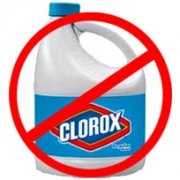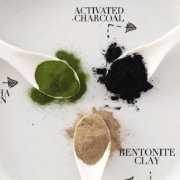Hospital Construction Can Kick Up Patient Concerns
by Leigh Somerville, For Business First
Aug 5, 2002
Patients can leave the hospital sicker than they arrived if construction crews don’t use the proper precautions to control infection during renovations and additions.
Several groups have taken steps to ensure that the most basic tenet for the health-care profession? ‘Do no harm’ also applies to building contractors working in hospitals.
The Centers for Disease Control and Prevention revised its guidelines in January of 2001 to include planning preventive measures for infection control before construction projects begin.
In January the Joint Commission on Accreditation of Health Care Organizations added similar standards, which parallel American Institute of Architects guidelines requiring Infection Control Risk Assessments.
Being More Vigilant
Health Facilities Management, an industry publication, recently reported that airborne mold and fungi spores, which can be released in dust generated by construction projects, contribute to the deaths of as many as 5,000 patients each year.
Infection control is not a new concern for contractors, but health-care providers and regulatory organizations are looking at construction more carefully now, says Lee Denning, project manager for Greensboro, N.C., construction firm Rentenbach.
“The Joint Commission is looking more at construction than it used to, and hospitals are establishing guidelines,” Denning says.
The biggest challenge, Denning says, is educating the crew to follow the guidelines.
“Like any other quality control, you have to keep people educated,” Denning says. “As long as everybody can work together, doing the work is not a problem.”
Diann Boyette, infection control manager for Forsyth Medical Center and Medical Park Hospital in Greensboro, N.C., says that when she began work 10 years ago infection control during construction was not considered to the degree that it is today.
“We weren’t involved upfront like we are now,” Boyette says.
Seal It for Safety
Boyette says that before a project begins, her staff meets with engineers and architects to talk about where construction will occur, what kind of hazards could be encountered and what measures need to be taken to prevent patients and employees from exposure to infection.
During construction, exposed surfaces are covered with drop-cloths, room doors are closed, surfaces are dampened to control dust and unused doors are sealed with duct tape. Air vents are blocked, dust mats are placed at entrances and exits and HVAC systems are isolated from work areas.
Crews vacuum with a filter vacuum at the end of work shifts, maintain air filtration systems and seal holes, conduits and punctures prior to leaving the work area. Barriers remain until the project has been inspected.
“The changes in the standards and guidelines are good because we’re providing more protection for our patients by looking upfront for hazards and making sure we have appropriate barriers in place,” Boyette says.
Slump Spurs Competition
Mark Furgeson, a managing principal with national health-care consulting and design firm FreemanWhite of Charlotte, N.C., says over the last decade, a lot of contractors have moved into that area of construction, he says.
More recently, the economic slump has hindered other types of construction and prompted more contractors to evaluate the still-growing health care sector. In fact, from 1998 to 1999 health care construction increased by 28.5 percent from $11.56 billion to $14.86 billion nationwide, according to the Centers for Disease Control.
Health-care construction is a highly specialized field, however, and Furgeson says it requires training for everyone involved.
“It’s not something you can just stumble into,” Furgeson says. “Not only do they need experience, but they need subs that have worked in hospitals. What we’re seeing is more out-of-state and international contractors looking to break into our area.”
Implementing infection control procedures during renovation can often add to the cost of a project, he says.
On a $10 million health care addition or renovation project, about one half of a percent can be attributed to the cost of such items as barriers, fans and filters for infection control.
Eager for Insight
Contractors are adapting to the changes in the industry but are eager for more guidance, says Rick Leone of Atlanta-based Law Engineering & Environmental Services, a consulting firm for commercial, governmental and industrial services.
Located in the firm’s Greensboro office, Leone says standards are just beginning to change and none of his current projects has been affected yet.
“In our experience, hospitals are just developing programs this year, and they are deciding how to integrate the new guidelines,” Leone says.
The biggest problem is the lack of guidance contractors are getting, he says.
“Contractors are accepting of the changes, but there is little guidance from the Joint Committee about how they’re going to inspect and what they will expect as far as record-keeping from the hospitals and contractors,” Leone says.
In the meantime, consultants around the nation are trying to bridge that gap.
Judene Bartley, vice president of Epidemiology Consulting Services in Beverly Hills, Mich., is a member of the American Institute of Architects Task Force for Guidelines revision and consults on health care safety-related and infection control issues for the Centers for Disease Control and Prevention.
While academic literature has been full of the risks of certain airborne fungi for years, it has only recently come to the attention of those potentially contributing to their spread, Bartley says.
We know what the risks are and yet we keep struggling uphill in trying to reduce risks in building,” Bartley says. “Things have come to a peak over a number of lawsuits that have gotten the attention of hospitals and construction companies.”
The most recent CDC guideline will be finalized later this year, Bartley says, and should assist health care organizations and contractors in how to develop better strategies not only to meet standards, but protect themselves from liability.





 ©Flairflickers.com
©Flairflickers.com 



